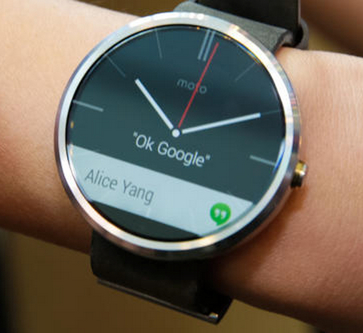Wearables in the enterprise: Unlimited possibilities

Google is kicking its Android Wear initiative into high gear with the unveiling of three smartwatches at Google I/O. The watches from Samsung, LG, and Motorola work with Google services and owners' Android devices to provide useful functions. These are aimed at consumers but have benefits for the enterprise with proper handling.
See also: Google's new Android-connected world just made updates far more important
Android phones are present in the workplace in great numbers, especially smartphones. Whether deployed by the enterprise or brought to work by employees with BYOD programs, there are lots of Android phones in offices.
The smartwatches shown by Google running Android (or other form factors) could fit in the enterprise and provide utility for both employees and the companies. They could connect to both the owner's phone and the corporate wifi network. A little imagination exposes functions that range from simple usefulness to those that are cost-saving in nature.
Replace the employee ID card
More from Google I/O 201
The employee ID worn on a lanyard around the neck can be seen in almost every office. This card with the employee's photo on it is used to scan the worker into and out of the office. They are a part of everyday corporate life.
This is a function that wearables could fill, whether in the form of a smartphone or perhaps as a smart card on a neck lanyard with a small display. Used with scanners that detect when the wearable passes, entrance to the office would be granted and the corporate system could note that employee A entered along with the date and time, much as it does now with ID cards.
In industrial settings, this function could be used instead of time clocks to record when workers take breaks and return to work. Over time this could represent cost savings over the old paper time cards commonly used by many companies.
This is just scratching the surface of monitoring services that wearables can provide. A little imagination can go a long way in coming up with useful enterprise functions for wearables.
Notifications
Company notifications of any type are often handled with email. Calling a general meeting usually requires a group email going out with details about the meeting. Using wearables would make notifications more fluid. The cards could flash when a company notification is received and the message instantly available to the worker. The worker could tap to indicate whether he/she will be attending the meeting or not.
Perhaps more importantly, in addition to typical notifications to employees the wearable could be used to receive emergency notices. This wouldn't be needed often, but when a situation occurs it would get the message directly to every employee no matter where they happened to be in the office. Appropriate instructions could accompany the emergency notification to ensure safety procedures are followed.
Email everywhere
Email is the official method of communication for most businesses, and the wearable could take on typical handling of this. Priority email could be flagged in red to make sure the worker responds immediately. Regular email could be checked at a glance to make it easy to stay on top of things.
There wouldn't necessarily be a need to have a means to respond to email, but creative companies could provide this. Even a small touch display could handle a simple touch keyboard, or perhaps allow voice input. That's probably too elaborate for most needs, and the ability to read messages is likely good enough.
You have a call
Work environments that find it important to be able to reach workers by phone could extend this to the wearable. When the wearable senses the worker leaves his/her work area, phone calls could be automatically routed to the gadget. Voice functions could be used to allow instant phone communication over the wifi network. Workers might not like always being reachable but if that's what the company wants, wearables would make it possible.
Tech Pro Research
If this phone service is not practical, the wearable could be used for voice mail instead. A notification that a call back in the employee's office has been missed along with who was calling can indicate the importance of the call. The ability to listen to the voice mail is also an option to make sure critical calls aren't missed, or the system could transcribe the voice mail to text and send that to the employee's wearable.
Personal and work functions coexist
Much as they do on phones in BYOD service today, wearables could work with smartphones for both personal and work functions. Personal communications could have a different background color than official work notifications. Workers could tell at a glance if they need to see what's up or put it off until later if it's personal.
The sky's the limit
These functions that wearables could fill in the workplace are the first that come to mind but are by no means the only ones. Imaginative IT staff could find all sorts of uses for wearables that benefit the company. Google's SDK for Android Wear should be a good place to check for ideas and how to implement them.
Wearables aren't restricted to smartwatches or smart cards as described here. There's no telling what forms wearables will ultimately assume, and no doubt some will be a good fit for the enterprise.
